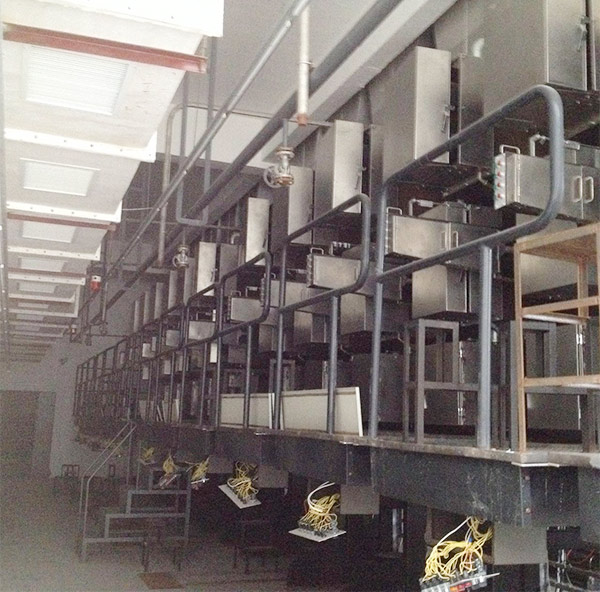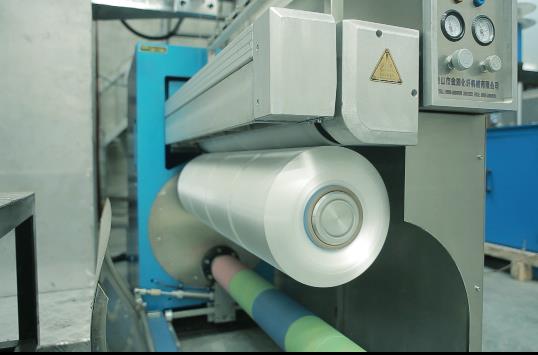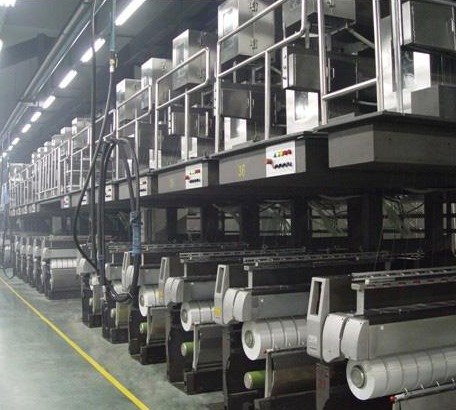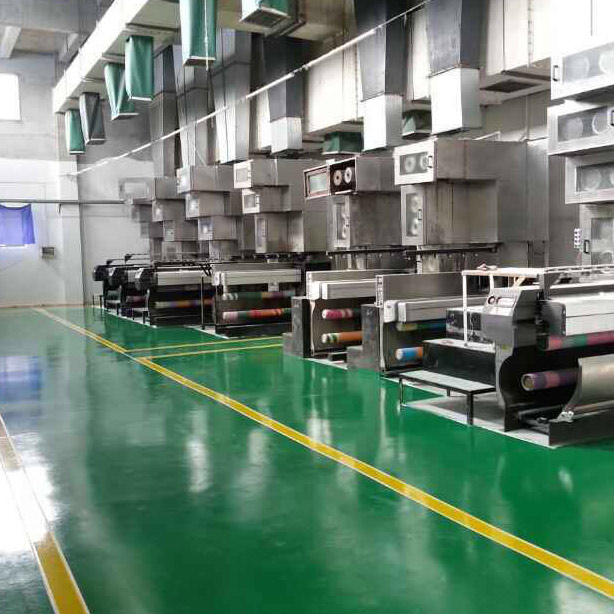- Polypropylene spinning machine
- Polypropylene FDY equipment
- Polyester POY spinning machine
- Polyamide FDY common and high strength equipment
- Polyester FDY equipment
- Polyester high strength equipment
- polyester、Polyamide、 Polypropylene BCF equipment
- Small spinning machine
- All kinds of spinning special parts
- Thousands of ships racing forward like a rainbow, all new things emerging as the sun rises. | FuBang Chemical Fiber Machinery wishes you a happy New Year's Day and a prosperous future!
- Several silk textile industry renewal projects in Shengze have started construction
- Polypropylene FDY spinning machine is a key equipment for the production of high-performance fibers
- The Winter Solstice marks the rise of Yang energy. In Fubon spinning machines, the Winter Solstice code is revealed, a dialogue of craftsmanship spanning a thousand years
- The establishment conference of Guangzhou Modern Textile and Garment New Quality Productivity Research Institute and the co-construction conference of the textile industry innovation ecosystem were held
- The key points of control in the polypropylene FDY spinning machine process and their relationship with quality

- Contact:Mr. Huang Guofu
- Cel:0086-13901505556
- Fax:0086-519-83341119
- Email:czfb5556@126.com
- Add:No. 288-8 ChangLi Rd, Huangli Town, Changzhou, JS PRV.
In 2018, the textile machinery industry maintained a steady and increasing trend. The main business income and exports still maintained double-digit growth. However, due to adverse factors such as Sino-US trade friction, the growth rate of the industry has slowed down. . Although the overall situation of the market is good, the various segments of the textile machinery are clearly differentiated, and the pressure for transformation and upgrading is still there.
In this year, textile machinery enterprises actively responded to market changes, accelerated the pace of scientific and technological research and development, carried out adjustment and transformation, and achieved gratifying results in terms of equipment intelligence, industry self-discipline and improvement of corporate management. In this year, smart manufacturing developed rapidly, and the trend of industrial transfer was obvious. The development opportunities of the industry were also bred.

Theme one
Intelligent acceleration layout
Intelligentization is not only an inevitable trend in the development of textile machinery equipment in the future, but also the most important feature of the development of the textile machinery industry in recent years. With the advancement of smart manufacturing related technologies in the textile field, the textile industry has evolved from the intelligence of stand-alone machines to the digitization, automation and intelligence of systems.
The exhibition is an important window reflecting the technological progress of the industry. At the 2018 China International Textile Machinery Exhibition and ITMA Asia Exhibition held in October this year, all kinds of exhibits also reflected the progress in the intelligentization of textile machinery equipment:
△ The automatic loading technology is put into production and application is an important step in the intelligentization of warping machine technology;
△ The application of technologies such as intelligent navigation and network monitoring makes the shuttleless loom more intelligent;
△ Warp knitting and finishing using the intelligent yarn system When the yarn on the creel needs to be replaced, the robot replaces the yarn in turn.
In general, industrial Ethernet technology is integrated into the core of the textile equipment control system architecture to ensure smoother and more efficient work between different control levels, between systems and within the system; automation product suppliers continue to study textiles The process uses new technologies and methods such as sensing technology, communication technology, computer, system control and artificial intelligence to provide users with a stable, reliable, efficient and energy-saving overall solution.

Theme 2
Innovative R&D does not stop
"There is no way out without innovation." This has become the general consensus of China's textile machinery enterprises. The emphasis on technological innovation and the continuous investment in “real gold and silver” have enabled the textile machinery enterprises to significantly improve their innovation capabilities. In 2018, many companies spoke with new products and new technologies and handed over satisfactory answers.
At present, the breakthrough of the key technology of carbon fiber dry-jet wet spinning process can make the spinning speed reach 400m/min or more, and the spinning speed is 5 times that of traditional wet spinning. At the same time, the rapid pre-oxidation technology of dry-jet wet spinning raw silk is also developed. , effectively shortening the pre-oxidation time and greatly improving production efficiency.
The “Key Technology Development and Application of Ultra High-speed Digital Printing Equipment” project carries out key technologies for ultra-high-speed digital printing equipment:
△ Invented a real-time parallel processing engine for super-large flow digital printing data, realizing ultra-high-speed real-time processing and transmission of digital printing data;
△ In response to the problem of fabric deformation and nozzle clogging during printing, a real-time monitoring and control method based on video printing process was invented;
△ Invented an automatic detection method for quality defects of printed images based on image quality evaluation model, and successfully developed ultra-high-speed digital printing equipment through video coding and network transmission to monitor the working state of equipment.
The improvement of innovation capability and differentiated development are still the focus of future development. This requires us to continue to do a good job in basic work, continuous management, technology and product innovation, improve product quality and product quality.

Theme three
Industry competition is more orderly
As the conventional equipment market tends to be saturated, problems such as homogenization competition and vicious price wars have become the constraints of enterprises in some fields.
Establish an orderly competition order, not low-price marketing and credit sales, in order to safeguard corporate interests and achieve sound development of the industry.
In view of the relatively low-priced competitive marketing and credit sales in the field of loom, the domestic main rapier looms manufacturers have signed self-discipline conventions, and enterprises are basically implemented in accordance with the provisions of the self-discipline convention. Since then, the printing and dyeing machinery industry and the circular weft machine industry have issued the "Industry Self-discipline Proposal" or the "Industrial Self-discipline Convention", calling for healthy competition and promoting the orderly and healthy development of the industry.

Theme four
Enterprise development upper floor
After years of market competition and baptism, China's textile machinery enterprises are more standardized and more scientifically managed. Many enterprises have strengthened cooperation with domestic and foreign enterprises and institutions through various forms to further enhance their competitiveness.
In 2018, Rifa Textile Machinery acquired Cross Roller, which became the latest case of cooperation and mergers and acquisitions between Chinese textile machinery enterprises and international enterprises. Crosrol is one of the world's leading textile machinery manufacturing companies. As the first internationally renowned textile machine brand to transfer from Europe to China, Crosrol has always insisted on developing personalized products in order to better meet the market demand and rely on the research and development capabilities of Crosrol UK headquarters.
On April 17, Shen Fangyong, Chairman of Hubei Tianmen Textile Machinery Co., Ltd. and Zhang Xiaodong, Chairman of Wuhan Huaxia Institute of Technology signed a cooperation agreement on school-enterprise talent training and a cooperation agreement on production, education and research. In recent years, relying on the resource advantages of universities and research institutes at home and abroad, the company has successively implemented strong alliances with Huazhong University of Science and Technology, Donghua University and Uster, and signed a high-speed draw frame for the development of high-speed drawframes. A number of cooperation agreements, such as the system, became Hubei Province's “National Digital Generation Machinery Product Application Demonstration Enterprise”.

Changzhou Fubang Chemical Fiber Machinery Factory mainly produces: polyester industrial yarn spinning combined machine, polyester POY spinning machine, polypropylene FDY spinning machine, polypropylene FDY production line, polypropylene FDY equipment, polypropylene FDY machinery, polyester industrial yarn spinning combined machine, Polyester FDY spinning machine, polypropylene spinning machine, polyester FDY production line, polyester FDY machine, nylon FDY spinning machine, polyester industrial yarn spinning machine.
- Thousands of ships racing forward like a rainbow, all new things emerging as the sun rises
- Several silk textile industry renewal projects in Shengze have started construction
- Polypropylene FDY spinning machine is a key equipment for the production of high-performan
- The Winter Solstice marks the rise of Yang energy. In Fubon spinning machines, the Winter
- The establishment conference of Guangzhou Modern Textile and Garment New Quality Productiv
- The key points of control in the polypropylene FDY spinning machine process and their rela
- A Guide for Managers to Break Through: Empowerment Rather than Control: Helping Enterprise
- The 2025 Textile and Garment Innovation Annual Conference and the Gongqingcheng Down Indus
- The technological upgrade of polypropylene FDY spinning machines empowers the production o
- Textile News: Full-chain Efforts + Cross-border Breakthroughs + Talent Foundation - The Te




